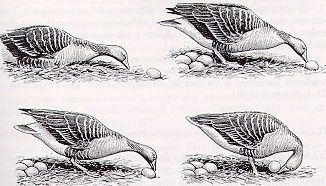https://blogger.googleusercontent.com/img/proxy/AVvXsEj32cdB2N1s9Gf20XBV4tTxYXu_Iu-0xATpU4XtcRREkhqPV1DWZzhZtW1JB2UeOQkPpn-TyPrZ_Uo7g9Zv3zaW7jvHBcKlIWrdSrwNKv7-obT7gEUMz1_O0Go5JXVFhJENbLFK5cpL7Av4O-jwx6yr7_NtgCVL5BcaZOSgshFAaP2HfusDWLCv5laxLaL4K9gBHn7ym-T2PPyExYZgT3eSWYzrv6O6UGITNqVgloez=
The
Boreal Forest is characterized as a biome consisting exclusively of evergreen and coniferous trees. It encircles the earth in far-northern latitudes just below the arctic tundra and just above the deciduous forests and grasslands of the temperate zone. It is the largest terrestrial ecosystem (surpassing the Amazon Rainforest) and remains largely undeveloped. Many people also visit the Boreal Forest just to witness the dancing Aurora Borealis (Northern Lights) in the sky.
https://blogger.googleusercontent.com/img/b/R29vZ2xl/AVvXsEgtFZ6ZAa0jbwDzoR019RLXk8QOBqGdON8UCD4p4OCsH8Lc8Pe7u4RzlGZRahsi3we3ZYeeKAL_0e7NgJu2lCBw7Hkc1LSGiiqND0om3ovTuGlRjQuysmrO5sgDCJwonByUK37AsZwOutwh/s400/mosaic.jpg
LOCATION
http://www.nrdc.org/land/forests/boreal/images/map.gif
ABIOTIC FEATURES
Soil/Minerals.
One might expect the soil conditions in a forest to be fertile and booming with life. However, the the soil in the boreal forest is frozen about 5 to 7 months of the year. Further more, the soil is highly acidic due to fallen conifer needles that accumulate on the forest floor. This, in turn, also provides poor nutrition to vegetation, limiting the types of vegetation that are able to prosper in these soil conditions. When the soil isn't frozen, it's swampy and marshy because the snow melts in late spring followed by heavy rainfall in the short summers that keep the water from being able to completely evaporate.
Precipitation
http://www.skolaiimages.com/journal/wp-content/uploads/2010/11/09_NOV52091.jpg
The boreal forest receives about 8 to 79 inches of precipitation a year, mostly in the form of snow and in the form of rain in the summer.
Air http://www.borealbirds.org/images/carbon/piechart-carbon.png

The boreal forest does a fantastic job of purifying the air and regulating the regional climate. The boreal forest also enjoys the higher concentrations of carbon dioxide in our atmosphere due to our consumption of fossil fuels. It is one of the largest carbon reservoirs in the world. It has been enabling growth rates not seen in human history according to a
new study. Geochemist Heather Graven of the Scripps Institution of Oceanography and her colleagues documents a dramatic spike in the flow of carbon dioxide into the forest. She states "Boreal Forests are more active than 50 years ago." Her and her colleagues also discovered that the ecosystems are changing (vegetation structures, compositions, photsynthesis timing, leaves, roots, wood) in response to the increasing levels of CO2.
Natural Occurings
Forest fires are extremely common and used to clean up the biome. This also includes the imfamous and beautiful northern lights.
Temperature
The boreal forest is prone to extremely long, harsh winters, and short, mild summers. The cold air blowing down from the arctic creates bitter winters, lasting more that half of the year. Temperatures in the winter oscillates wildly from a high of 30 to a low of -65 degrees Fahrenheit. In the summer, temperatures range from a high of 70 to a low of 30 degrees Fahrenheit. Temperatures usually remain below freezing for more that half the year. The average overall yearly temperature is 32 degrees Fahrenheit (freezing point).
https://blogger.googleusercontent.com/img/proxy/AVvXsEhcqvKqHN3rW4kgw517I8JR7Xo8cTSeLAbzvQwTzfQxiN3VpJaTRb1ULun11qGzy5zrerUKorHgTN69TBhL0XPv_38fjqgmyqF-q4U2ufVdITK15nm44Blm4eWBg4vBVPfofEftjHHRYulSEVF4rXdOU6lS3o6t8M05dD6ptelEkCROiLAd=
Sunlight
Because the boreat forest is located in the northern regions, it receives up to 20 hours of sunlight per day during the summer. While in the wintertime, the forest only receives a few short hours. The long days and mild temperatures during the summer abets and welcomes a rapid burst of plant growth. Unfortunately, the summer growing season only lasts for 3 months before the temperature begins to drop.
BIOTIC FEATURES
https://blogger.googleusercontent.com/img/proxy/AVvXsEg5KUskTU8xuhET5VgTiKWbe27Tf1l8VEf16AV53xC7Fhmwo7Dd7X9F9XzG6Vvv1zFMteGwuPFD7l4vxGQ41gIT_mJK7YRNp6GUGuuZ4P5wF4UCQoSV0-i-pNCg4TRXd2wVyQQ076bq0UCCoeH0LNkRUWpc9Q8bMEkv-3CG2HDzjVrSYTCxgw=
Producers
The producers include the evergreen trees, wild grass, wild flowers, deciduous shrubs, ferns, mosses, and lichens
Consumers
Carnivores: Felids (cats) such as the bobcat, lynx, and siberian tiger. Canids (dogs) such as wolves.\
Herbivores: Deer (elk), moose, arboreal (tree-living), porcupine, snow hare, rodents.
Decomposers
Decomposers: Soil bacteria, nematodes, worms, fungi, protozoans
FOOD WEB
https://blogger.googleusercontent.com/img/proxy/AVvXsEj09-_ve_-_ffmywfgabrAE2NAUQVZzOn88bOMVTwhUC4JPj_sKpQwlxdxCm0bHsxwn8nR-aUSmqdxL44bjdc-Cww3wyFkdKOXV8wo_fjyt4Hl61G-klIQUd7naiNiOCUAjzGuon0rI3xzpdfYMnTXls7IusEl9KUEkVtzA663E12hnza639_cnpxuxB1TzNKo26i0=
HUMAN INFLUENCE/ THREATS
Exploration and development of oil and gas reserves are the greatest threats to the boreal forest. With increased instability in the Middle East, high demand for fuel, efficient technology, people are pushing into the abundant amounts of petroleum reserves that lie in the forests. This is troublesome for the slowly growing coniferous trees.
Global warming poses a treat to this biome as well. As the planet warms the southern parts of the boreal forest, it becomes warm enough for deciduous trees to push north and out-compete the coniferous trees. The warmer weather has also fostered an increase in tree-damaging insects.
The logging industry (mostly in Siberia) also possesses a major threat to this biome. Clearcutting has been a major concern as well. 90% of the products taken from the lumber of the boreal forest is exported. The forest is extremely slow paced in recovery. Large areas of the boreal forest have also been flooded for a part of the hydroelectric project. Only 8% of the boreal forest is protected under law in Canada.
EVOLUTIONARY FEATURES http://www.world-builders.org/lessons/less/biomes/conifers/conif-for/tallconf.gif
Coniferous trees are tall and narrow so that the snow is able to easily slide of the branches without breaking the branches from the weight. The trees grow close together in order to protect one another from the wind. Their tough needles resist frost and wind damage while conserving water. The trees also sport thick barks in order to protect itself from the damage of the summer fires. These trees use wind for pollination, taking advantage of their close set proximity. During the spring, the air is golden with pollen.
Many birds migrate as the winter comes, while other animals hibernate. Deer travel long distances in search of food. The snowshoe hare has evolved large paws for running over the snow, white fur (camouflage) for the winter, and brown fur (camouflage) for the summer. Other animals bury beneath the snow to better insulate themselves from the winter cold. Because of the harsh environment of the boreal forest, there are fewer species of plants and animals. (amphibians and reptiles for example).
The long days during the brief summers allow an exponential amount of photosynthesis and plant growth. This also invites a burst in insect activity, which many birds that migrate to the forest during the summer, take advantage of. Since there are a fewer number of species that tolerate the climate of the forest, there is also reduced competition for the birds to forage for food and raise their young.
The acidic conditions caused by fallen conifer needles and poor nutrition on the forest floor spikes the competition in plants. In order to combat the small number of resources, some plants evolved to be carnivorous, use parasitism, and use mycorrhizae.
https://blogger.googleusercontent.com/img/proxy/AVvXsEhe2D9scsLTup-RH6ou4Bc8G0ERSOLfs8MX_Cvx4vhqnEEiyIZCk4lZrkUyCC36lJULkvuaXRXnV5mwadvnYoV2eotpe4v8BBzddx3lBkktnXU9064_dj-1fQN35tIJOR-KIYevONMuWc8OdSdRQ27c7tnj2eqfelfe_OvRV9NoQohbTiEU6VVAnz-_HM7ZzEzqSZKBOAso=
Thank You!
SOURCES
Scientific American
Bright Hub
Marietta Education
Wikipedia



























